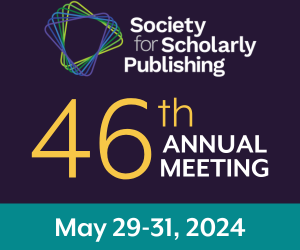Gates Foundation grantees find themselves once again facing a new Open Access Policy that increases their compliance burden. And, though the compliance burden increases, financial support for open access and other publication-related fees, which functioned to smooth pathways for compliance under the previous 2015 and 2021 policies, is eliminated. This essay explains and compares the 2021 and 2025 policies, argues that the rollout of the new policy led to misunderstandings, and details possible implications for grantees, readers, and publishers.

Current Policy
With the 2025 policy presented as a “Policy Refresh” rather than a new policy, it is important to understand the current policy, which took effect in 2021 and brought the Gates policy into alignment with Plan S. The 2021 policy is succinctly summarized in the Gates “Grantee Guide to Publishing” [PDF] as follows:
“Effective January 1, 2021, all research articles and their underlying data which arise from our funding, in whole or in part, must be made freely available at the time of publication through placement in a publicly available repository, and openly licensed under a Creative Commons Attribution license (CC BY) or equivalent terms to allow others to build on and reuse the research.”
Compliance with the repository mandate is supported by Gates’ status as a participating funder in the NIH Manuscript Submission (NIHMS) system, which facilitates the submission process for peer-reviewed manuscripts to PubMed Central (PMC). Furthermore, grantees are instructed that “most publishers will automatically deposit your article to PubMed Central, so your Open Access requirements will be met.” Grantees do not have to monitor their publishers themselves. Instead, Gates advises grantees that “the foundation will contact you if the journal doesn’t deposit your article and assist you in uploading your accepted manuscript to an open repository through their partnership with OA.Works.” Regardless of the repository where the work is deposited, metadata identifying Gates funding is required, presumably to enable the foundation to track outputs and compliance.
Additionally, the 2021 policy requires that each accepted article be accompanied by a “Data Availability Statement” and that the “underlying data supporting the accepted article shall be immediately accessible and open upon article publication.” Gates provides extensive guidance for grantees navigating this aspect of compliance, including lists of Gates-approved repositories.
Finally, grantees must “retain sufficient copyright … to ensure that articles accepted for publication are deposited into an open-access repository and published under the CC BY 4.0 or equivalent license” and are required to include the following rights retention statement (RRS) when submitting a manuscript for publication:
“This work was supported, in whole or in part, by the Bill & Melinda Gates Foundation [grant number]. Under the grant conditions of the Foundation, a Creative Commons Attribution 4.0 Generic License has already been assigned to the Author Accepted Manuscript version that might arise from this submission.”
Gates has a straightforward checklist that a grantee can use to determine that they have met their compliance obligations:
- Your article is freely available at the time of publication and licensed CC BY.
- Your article is available in an open repository.
- Your data is available in an open repository.
It is worth noting that it is possible in some circumstances to check off all of the items on the checklist without including the RRS in one’s manuscript and/or without retaining any copyright. As such, the checklist helps clarify which of the aspects of the open access policy really “count” as compliance mandates and which are in place to facilitate compliance but are seemingly not required to meet compliance obligations.
Finally, in both the 2021 policy as well as the 2015 policy that preceded it, Gates promised financial support for publishing the version of record open access. The 2015 policy stated that “the foundation would pay reasonable fees required by a publisher to effect publication on these terms.” The 2021 policy narrowed the support, stating that it will “only pay these fees for articles publishing in fully Open Access journals” and directing grantees to the DOAJ for a list of such journals. Though this financial support is offered, grantees are not obligated to avail themselves of it.
The 2025 Policy Reveal and Plan S
As mentioned above, Gates presented the policy that takes effect in 2025 as a “Policy Refresh.” This framing seemed a bit odd early on, before the policy was released, as the new policy appeared to replace the repository mandate with a preprint mandate, which would be a radical departure from the 2021 policy. I admit that I interpreted the early information this way, seeing the new policy as Gates defecting from Plan S. And, Johan Rooryck, Executive Director of cOAlition S, was reported as saying that the new policy is not “entirely in line with cOAlition S” while observing that coalition members have “a lot of leeway in policies.”
The sense that the “Policy Refresh” is something much more radical than it turned out to be was an unfortunate consequence of how information about the policy was disseminated before the policy itself was available.
On March 27, the new policy was introduced by Ashley Farley, Gates Program Officer of Knowledge and Research Services, in a webinar hosted by the Center for Global Development. It was also announced by Estee Torok, Gates Senior Program Officer, in a blog post later that day. Tom Drake, a senior policy analyst at the Center for Global Development, published an analysis of the policy on the same day. But, the policy itself was not yet available.
Instead, a policy FAQ was first posted. Then, Taylor & Francis announced that Gates was collaborating with F1000 to build a verified preprint platform, VeriXiv, which “will support researchers in complying with the Gates Foundation’s refreshed open access policy.” This led to questions about whether Gates would also be mandating that particular preprint server for their grantees. Via Tweet and in an interview, Farley confirmed that grantees would be able to choose from a list of recommended preprint servers, something we now know from the policy, but as of April 5 it could only be known via other sources.
The policy was finally made available on April 7. It is unclear why there was an 11-day gap between the policy being announced and the policy being made available. Perhaps Gates had not yet finalized all of the details of the policy when it was announced? Or, perhaps Gates was hoping to shape perceptions of the policy during the initial news cycle without having to answer questions about specifics?
Regardless, once the policy itself was available, it became clear that the 2025 policy is less a radical departure from the 2021 compliance requirements than a continuation of those mandates while imposing additional mandates. And, as such, it remains relatively well-aligned with Plan S.
2025 Policy – More Mandates and Less Support
The 2025 policy applies to “all published research funded, in whole or in part, by the foundation (“Funded Manuscripts”) and “any data underlying the Funded Manuscripts.”
“Funded Manuscript” functions as a roll-up term for the manuscript versions of a publication. The versions of note relative to the 2025 policy are the preprint and accepted manuscripts. The 2021 policy required that one of these, the accepted manuscript, be available open access. The 2025 policy requires that both the preprint manuscript and the accepted manuscript be made available open access. This is a doubling of the compliance mandate for the availability of manuscripts.
Specifically, a Funded Manuscript is required to be “published as a preprint in a preprint server recognized by the foundation or (sic) preapproved preprint server which applies a sufficient level of scrutiny to submissions.” A list of preapproved preprint servers has not yet been made available; however, Farley confirmed via email that the information will be added to the FAQ soon and that Gates does not intend to create its own list but will link to ASAPbio’s preprint directory.
Surprisingly, grantees themselves are empowered to exempt themselves from this mandate when a grantee “determines that a preprint is not appropriate due to ethical, safety or other legitimate concerns.” At this time, there is no information about what these other legitimate concerns might be, how a grantee should approach making this determination, or whether such a decision needs to be communicated to Gates.
The 2025 policy does not require that preprints have metadata tagging identifying Gates funding; however, it does require that preprints carry a CC BY 4.0 or equivalent license and that the underlying data “be made accessible immediately and as open as possible upon availability of the Funded Manuscripts.” This is a significant temporal change to the open data mandate, shifting it forward in time to before peer review, rather than after, as allowed in the 2021 policy.
The 2021 mandate to make the accepted manuscript available in a repository remains in the 2025 policy:
“accepted articles shall be deposited immediately upon publication in PubMed Central (PMC), or in another openly accessible repository, with proper metadata tagging identifying Gates funding.”
In other words, the preprint mandate does not replace the accepted manuscript mandate; the preprint mandate is in addition to the accepted manuscript mandate. The mandate to deposit an openly available accepted manuscript keeps the 2025 policy aligned with Plan S, specifically the repository route.
Copyright retention language remains essentially the same in the 2025 policy. Specifically, grantees “shall retain sufficient copyright … to ensure such Funded Manuscripts are deposited into an open-access repository and published under the CC-BY 4.0 or equivalent license.” As noted above, it may not be necessary to retain copyright at all to achieve this outcome; however, as there is not yet a compliance “checklist” for the 2025 policy, it is unclear if copyright retention remains an enabling strategy or “counts” towards compliance.
Finally, the 2025 policy states that grantees should include a specific acknowledgment and licensing notice in Funded Manuscripts:
“This work was supported, in whole or in part, by the Bill & Melinda Gates Foundation [Grant number]. The conclusions and opinions expressed in this work are those of the author(s) alone and shall not be attributed to the Foundation. Under the grant conditions of the Foundation, a Creative Commons Attribution 4.0 License has already been assigned to the Author Accepted Manuscript version that might arise from this submission. Please note works submitted as a preprint have not undergone a peer review process.”
This statement’s first and third sentences are essentially unchanged from the 2021 policy. The second and fourth sentences are new. Somewhat problematically, the mandated fourth sentence may not be true. It is entirely possible for a preprint to be posted and then submitted to a journal for consideration, the preprint updated after peer review, and then that revision be rejected by the journal. Upon submission to another journal, the last sentence in the required notice would not be accurate.
So, to sum up, with respect to what is mandated, the 2025 policy is not a radical departure from the 2021 policy. The 2025 policy continues, with some minor modifications, previous mandates while also adding the preprint mandate and accelerating the timeframe for providing open data.
But, with respect to support, the 2025 policy deviates significantly from the 2021 policy. While the 2021 policy (and the 2015 policy before it) made funds available to support open access publishing fees, this financial support is removed in the 2025 policy:
“The Foundation Will Not Pay Article Processing Charges (APC). Any publication fees are the responsibility of the grantees and their co-authors.”
It is important to note that utilizing the offered financial support was not mandated previously. As such, this is not a policy change regarding what is mandated but rather regarding the support provided to grantees that enables pathways to compliance.
Implications for Grantees
In her blog post, Torok asserted that requiring preprints means “breaking free from journal constraints while prioritizing access to research and preserving grantee publishing choices.” Farley’s webinar slides echoed this as well, stating: “grantees can continue to publish in the journal or publication of their choice” and “the 2025 policy will not impact where and when grantees can publish their research.”
Will this actually be the case?
If Gates were the only organization involved in shaping the environment that grantees must navigate, it is true that authors would be free to choose their publication outlet — there is nothing in the 2025 policy that dictates or prohibits publishing the version of record in a particular venue. However, Gates is not the only player. Grantees must contend with any mandates from their employers, mandates that their co-authors must adhere to, and what the market is offering as publishing options.
Broadly considered, the only grantees who are genuinely free to publish where they wish are those with other funding sources besides Gates with which to pay publication fees. Grantees who do not have other funds will not be able to publish in subscription journals that charge publishing fees or in fully open access journals that charge an APC. Confusingly, if grantees were subject to the 2021 policy, these latter journals are the very journals that the 2021 policy financially supported for APC payment. For fields where fully open access journals have displaced subscription or hybrid journals as the most desirable outlets, being unable to pay APCs in such journals will be a particular blow to grantees.
Grantees who do not have other funding sources to pay publication fees will need to identify journals that do not charge a fee to publish open or that do not charge any fees to publish a non-open article. But, it cannot be assumed that such journals will consider a manuscript that asserts the mandated rights retention statement (RRS): “Under the grant conditions of the Foundation, a Creative Commons Attribution 4.0 License has already been assigned to the Author Accepted Manuscript version that might arise from this submission.”
Gates has previously shared, for example, that some publishers will not consider a manuscript for non-open publishing when authors include the RRS: “Elsevier does not allow for RRS. When they see Gates funding acknowledged they say it’s APC or C your way out.” Springer Nature responded to the rights retention strategy from Plan S with a policy that “authors will therefore be directed to select the gold OA route.” In other words, authors may need to comply with a “green OA” mandate (which is how the Gates accepted manuscript deposit would be categorized in the “OA rainbow”), which is definitionally without author fees, but the pathway to that compliance may only be via paid “gold OA,” a phenomenon I previously termed “green-via-gold.”
Under the 2021 policy, grantees were already facing challenges to publishing in their preferred venues. Adding a preprint mandate to the 2025 policy does not mitigate those issues. To address those issues, Gates would need to expand its financial support for publication fees or eliminate the mandate to deposit the accepted manuscript (or at least eliminate the RRS mandate). Instead, Gates has exacerbated the existing challenges by eliminating the financial support previously provided.
Implications for Readers
The availability of preprints for Gates funded research means readers will have earlier access to Funded Manuscripts and the underlying open data. They will also have access to at least two versions of each Funded Manuscript – the preprint and the accepted manuscript. What we should anticipate as well is that they will have access to the version of record for fewer articles. Grantees without other funds will not be able to pay APCs and will shift their publishing behavior away from the open journals Gates was previously supporting them to publish in. Given the centrality of the version of record in editorial guidelines, discovery pathways, and various use cases such as undergraduate teaching, diminishing open access to the version of record of Funded Manuscripts will be a loss for readers.
Implications for Publishers
The implications of the 2025 policy for fully open access journals and fully open access publishers charging APCs are potentially significant. They have likely already calculated their predicted lost revenue and are in the process of developing a strategic response, depending on how many of their authors are Gates grantees. The impact may be minimal for a given publisher, given that Gates grantees publish about 4,000 papers annually, which is only about .07% of articles published each year. Publisher options will include forgoing Gates Funded Manuscripts, providing full or partial fee waivers, and/or expanding their efforts to strike “pure publish” agreements with universities and other research institutions.
Publishers of subscription/hybrid journals likely already have policies around preprints and rights retention statements in place. They may review those policies in light of the Gates 2025 policy; however, with the rights statement unchanged from the 2021 policy and preprints already widely accepted, few changes would be anticipated.
A significant change for all publishers to consider is how the temporal shift of the open data mandate to the preprint will impact submission, editorial, peer review, and publication workflows.
A Future Gates Policy?
In all of the iterations of the Gates Open Access policy, one can see Gates balancing its mandates with anticipated author and/or publisher reactions. For example, the 2015 policy allowed “a transition period of up to two years” and stated that “during the transition period, the foundation will allow publications in journals that provide up to a 12-month embargo period” and allowed an embargo on open data during the transition as well. In the 2021 policy, preprints were encouraged but not required. And, though the 2021 policy states that financial support will be available only for DOAJ-listed journals, financial support was also available for publishing open in cOAlition S-identified Transformative Journals. In the 2025 policy, grantees may exempt themselves from the preprint mandate under certain conditions.
It is also worth noting that Gates has been building its own publishing infrastructure over the past decade. The Gates Open Research platform went live on F1000 in 2017. And, as mentioned above, Gates is now partnering with F1000 on VeriXiv, a server for verified preprints.
Do these trends and signals portend a future in which these optional infrastructures, available so grantees “can easily comply with the foundation’s Open Access Policy,” are no longer optional? Perhaps the future is that these will be bolstered first by being required in addition to other platforms and then eventually as the main option against increasingly limited alternatives? Is Gates watching the vertical integration of workflows elsewhere in the industry and pivoting towards such a vertical stack for its own research investments?
Only time will tell how the Gates Open Access policy will evolve. But I, for one, will be paying attention anytime a Gates employee asks anything like, “If you had the power to craft your vision of the perfect #OpenAccess policy for grantee/institutional author what would it look like? What do you think will lead to actual change in scholarly communications?”
Discussion
2 Thoughts on "Gates Open Access Policy Refresh Increases Compliance Burden and Eliminates Financial Support"
As always, a very interesting report and a good overview. Thank you. But what is missing is the impact on libraries. Although it was clear that PlanS funders ‘can contribute financially to Open Access publishing under transformative arrangements’ until the end of 2024, it was also clear they ‘will’ support costs in gold journals. Gates is now the first to withdraw from funding for oa journals. That will definitely have an impact on the libraries’ OA budgets.
There is definitely more to say about this policy refresh! It would be great if a library that supports Gates grantees submitted a piece about how they modeled the financial impact and developed their response.



